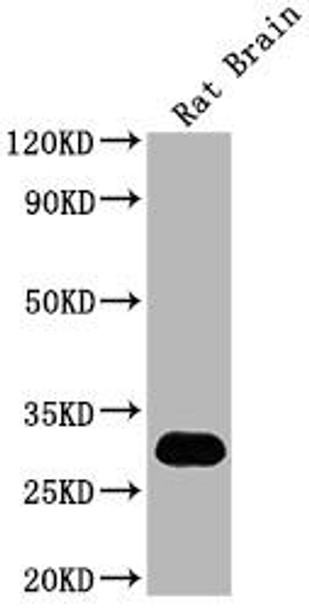Description
Hmgb1 Antibody (PACO64769)
The HMGB1 Polyclonal Antibody (PAC064769) is a valuable tool for researchers studying HMGB1, a protein involved in immune regulation and inflammation. This antibody, generated in rabbits, exhibits high specificity and sensitivity towards human samples, making it a reliable choice for Western blot applications. By targeting the HMGB1 protein, researchers can effectively detect and analyze its expression in various cell types, facilitating studies in immunology and cancer research.HMGB1 is a versatile protein with diverse functions in immune response modulation, cell differentiation, and DNA repair. Its involvement in inflammatory processes and tumorigenesis has garnered attention in the research community, with potential implications for therapeutic interventions in cancer and autoimmune diseases.
Understanding the role of HMGB1 is essential for deciphering its impact on disease progression and developing targeted treatments.In summary, the HMGB1 Polyclonal Antibody (PAC064769) represents a valuable research tool for investigating the intricate functions of HMGB1 in immune regulation and disease pathogenesis. Its reliability and specificity make it a valuable asset for researchers seeking to unravel the complex mechanisms underlying immune responses and inflammatory disorders.
| Product Name: | Hmgb1 Antibody |
| Product Code: | PACO64769 |
| Size: | 50µL |
| Target Names: | Hmgb1 |
| Species Reactivity: | Rat |
| Host Species: | Rabbit |
| Antigen Species: | Rattus norvegicus (Rat) |
| Tested Applications: | ELISA, WB; Recommended dilution: WB:1:1000-1:5000 |
| Isotype: | IgG |
| Clone ID: | N/A |
| Conjugate: | Non-conjugated |
| Clonality: | Polyclonal |
| Antigen: | Recombinant Rat High mobility group protein B1 protein (2-18aa) |
| Form: | Liquid |
| Buffer: | Preservative: 0.03% Proclin 300 Constituents: 50% Glycerol, 0.01M PBS, pH 7.4 |
| Purification Method: | >95%, Protein G purified |
| Storage: | Upon receipt, store at -20°C or -80°C. Avoid repeated freeze. |
| Aliases: | High mobility group protein B1 (Amphoterin) (Heparin-binding protein p30) (High mobility group protein 1) (HMG-1), Hmgb1, Hmg-1 Hmg1 |
| Uniprot ID: | P63159 |
| Background: | Multifunctional redox sensitive protein with various roles in different cellular compartments. In the nucleus is one of the major chromatin-associated non-histone proteins and acts as a DNA chaperone involved in replication, transcription, chromatin remodeling, V(D)J recombination, DNA repair and genome stability. Proposed to be an universal biosensor for nucleic acids. Promotes host inflammatory response to sterile and infectious signals and is involved in the coordination and integration of innate and adaptive immune responses. In the cytoplasm functions as sensor and/or chaperone for immunogenic nucleic acids implicating the activation of TLR9-mediated immune responses, and mediates autophagy. Acts as danger associated molecular pattern (DAMP) molecule that amplifies immune responses during tissue injury. Released to the extracellular environment can bind DNA, nucleosomes, IL-1 beta, CXCL12, AGER isoform 2/sRAGE, lipopolysaccharide (LPS) and lipoteichoic acid (LTA), and activates cells through engagement of multiple surface receptors. In the extracellular compartment fully reduced HMGB1 (released by necrosis) acts as a chemokine, disulfide HMGB1 (actively secreted) as a cytokine, and sulfonyl HMGB1 (released from apoptotic cells) promotes immunological tolerance (PubMed:23519706, PubMed:23446148, PubMed:23994764, PubMed:25048472). Has proangiogenic activity. May be involved in platelet activation. Binds to phosphatidylserine and phosphatidylethanolamide (PubMed:11154118). Bound to RAGE mediates signaling for neuronal outgrowth (PubMed:1885601, PubMed:2461949, PubMed:7592757, PubMed:12183440). May play a role in accumulation of expanded polyglutamine (polyQ) proteins. |
| Research Area: | Others |






